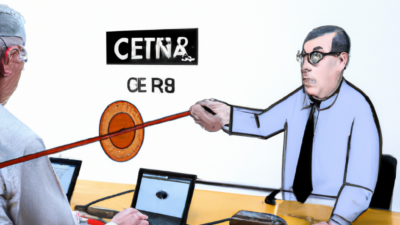**Navigating the Murky Waters of Stagflation: The Role of Monetary Policy**
Stagflation, a perplexing economic condition characterized by stagnant growth, high unemployment, and soaring inflation, presents a formidable challenge for policymakers. This rare yet severe economic scenario defies the conventional wisdom that thriving economies experience either inflation with growth or recession with deflation. Instead, stagflation combines the worst of both worlds, creating a unique dilemma for central banks and governments. As traditional economic tools often fall short in addressing this dual-threat environment, the formulation and implementation of effective monetary policy become crucial. In this article, we delve into the intricate dynamics of stagflation, exploring the specific monetary policies that can be employed to mitigate its adverse effects. From tightening measures aimed at curbing inflation to stimulating initiatives designed to rejuvenate economic growth, we examine the delicate balancing act required to steer an economy through the turbulent waters of stagflation. Join us as we unravel the complexities of this economic paradox and shed light on the strategies that can help stabilize economies caught in its grip.
Certainly! Below is a suggested content outline for an article on "What Monetary Policy is Used During Stagflation":
During periods of stagflation, where an economy experiences stagnant growth, high unemployment, and high inflation simultaneously, monetary policy faces significant challenges. Traditional monetary tools often address either inflation or unemployment, but not both at the same time. Here, we delve into the specific monetary strategies employed to navigate this complex economic scenario.
1. **Interest Rate Adjustments**: Central banks typically use interest rate changes as a primary tool for monetary policy. During stagflation, raising interest rates can help to combat inflation by making borrowing more expensive, which in turn can reduce spending and slow down price increases. However, this can also exacerbate unemployment and further dampen economic growth. On the other hand, lowering interest rates to stimulate growth and reduce unemployment risks fueling inflation even more.
2. **Quantitative Tightening**: To directly address inflation, central banks might engage in quantitative tightening, which involves the selling of government bonds or the reduction of the central bank's balance sheet. This action decreases the money supply, aiming to reduce inflationary pressures. However, similar to raising interest rates, this can also slow down economic growth and increase unemployment.
3. **Targeted Monetary Interventions**: Another approach is to use more targeted monetary interventions that can address specific sectors or issues without broadly impacting the entire economy. This can include providing liquidity to specific industries that are struggling or using financial tools to support small and medium enterprises. Such measures can help stimulate certain areas of the economy without significantly exacerbating inflation.
4. **Inflation Expectations Management**: Central banks also work to manage inflation expectations through clear communication strategies. By signaling their commitment to controlling inflation, central banks can influence the behavior of consumers and businesses, potentially stabilizing prices without drastic policy measures. This involves setting clear inflation targets and providing guidance on future monetary policy actions.
5. **Supply-Side Policies**: While not directly a monetary policy, central banks often advocate for supply-side measures during stagflation. These can include government policies aimed at increasing productivity, reducing regulatory burdens, and enhancing labor market flexibility. Improving the supply side of the economy can help mitigate some of the effects of stagflation by addressing the root causes of low growth and high inflation.
6. **Coordination with Fiscal Policy**: Effective management of stagflation often requires close coordination between monetary and fiscal policies. Central banks need to work in tandem with government fiscal measures to address both inflation and unemployment. For instance, fiscal policies geared towards infrastructure investment or social safety nets can complement monetary efforts, providing a more balanced approach to stimulating growth while controlling inflation.
In summary, navigating stagflation requires a delicate balance and a combination of various monetary tools. Central banks must carefully consider the trade-offs between controlling inflation and stimulating economic growth, often requiring innovative and coordinated approaches to effectively manage such a challenging economic environment.













